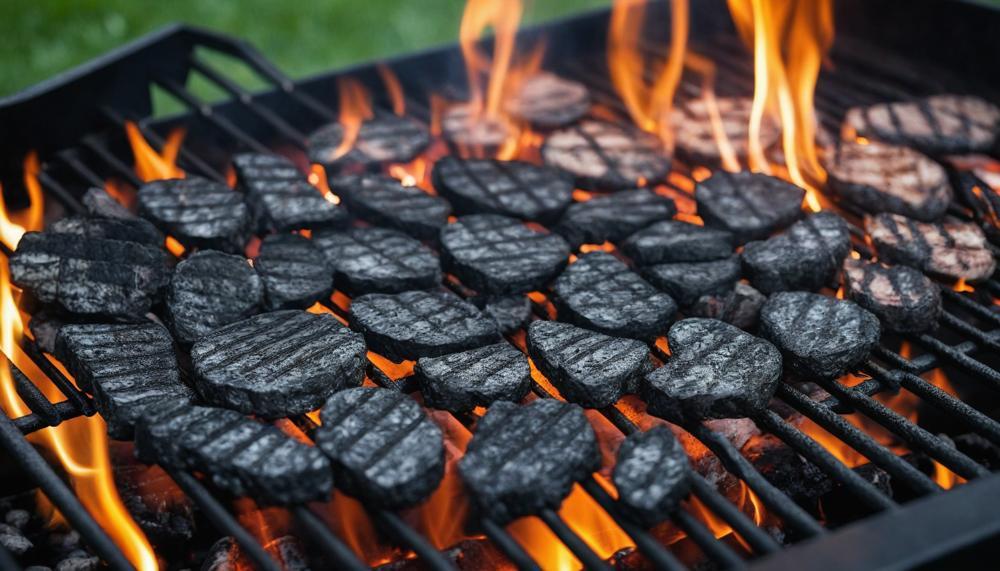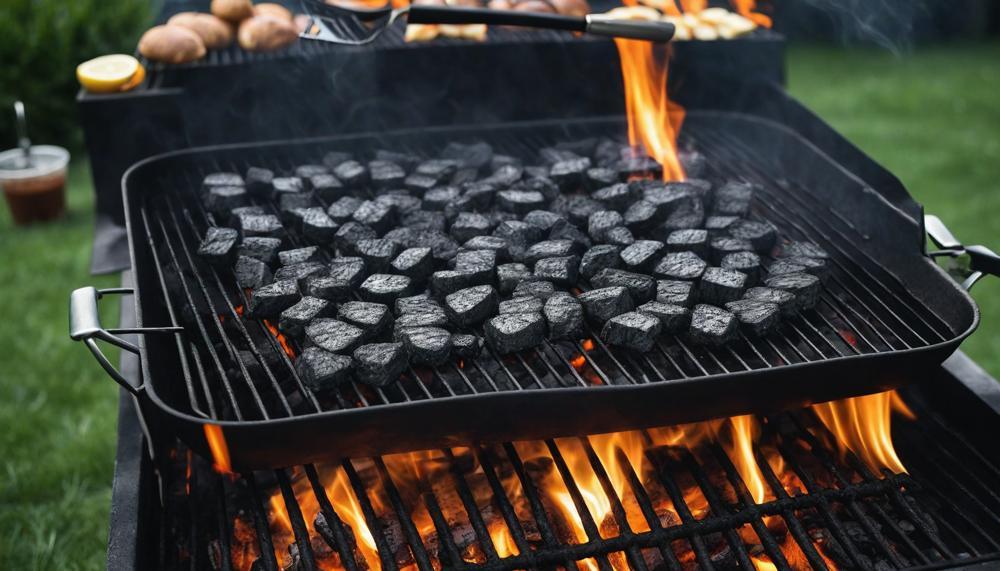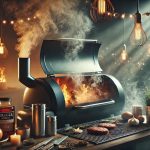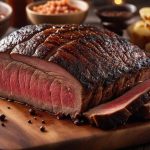Yes, and knowing how to do it properly can significantly impact your grilling success. Whether you’re cooking up steaks, burgers, or veggies, adding charcoal during a grill session is often necessary to maintain consistent heat and cooking times. Imagine this scenario: you’ve prepped everything perfectly, but halfway through grilling, the heat starts to wane. That’s where adding more charcoal comes in handy.
Here’s why it matters and what you need to know:
- Maintaining Heat Levels: Charcoal burns out over time, especially during longer grilling sessions or in adverse weather conditions like wind or cold. Adding fresh charcoal ensures your grill maintains the optimal temperature for cooking.
- Safety First: Always prioritize safety. Use a chimney starter to ignite new charcoal safely without lighter fluid. Wait until the coals are ash-covered before adding them to the grill to prevent flare-ups.
- Procedure Matters: Use heat-resistant gloves and long-handled tongs to add new coals seamlessly. This helps maintain heat consistency without disrupting your cooking rhythm.
By understanding when and how to add charcoal mid-grill, you’ll elevate your grilling game to new heights. Stay tuned for our detailed guide on mastering this technique, ensuring every BBQ session ends with perfectly grilled delights.
Contents
Why and When to Add More Charcoal
| When should you consider adding more charcoal while grilling? | ||
| Answer: | ||
| When the heat starts to dwindle and your grill needs an extra kick. | ||
| Explanation: | ||
| Adding more charcoal during grilling is essential to maintain consistent heat levels, ensuring your food cooks evenly and gets that perfect sear. As charcoal burns down over time, especially during longer grilling sessions or in adverse weather conditions like cold or wind, you’ll notice the temperature dropping. Here’s when you should consider topping up your charcoal: | ||
|
||
| When adding more charcoal, follow these practical tips to maintain safety and cooking efficiency: | ||
|
||
| By following these guidelines, you’ll master the art of charcoal grilling, maintaining control over heat levels and achieving that signature smoky flavour that makes outdoor cooking a true delight. | ||
How to Safely Add Charcoal to the Grill
- Prepare Your Charcoal: Use a chimney starter to light your charcoal. Avoid using lighter fluid on hot coals to prevent flare-ups.
- Wait for Ash Formation: Let the charcoal burn until it’s covered with a white-gray ash. This indicates it’s ready for grilling.
- Safety Gear: Equip yourself with heat-resistant gloves and long-handled tongs to handle hot charcoal safely.
- Adding Charcoal: Carefully place the ash-covered charcoal onto the grill using the tongs. Avoid dropping them to prevent burns or accidents.
- Close the Lid: After adding charcoal, close the grill lid. This helps in maintaining a hotter environment and assists in igniting the new charcoal.
- Monitor Temperature: Keep an eye on the grill’s temperature to ensure it doesn’t overheat. Adjust vents for proper airflow to control the heat.
Other Tips for Managing Heat During Charcoal Grilling
Adjust Air Dampers:
- The key to controlling heat during charcoal grilling lies in adjusting the air dampers. These are vents usually found at the bottom and sometimes on the lid of the grill.
- More air intake increases temperatures, ideal for searing steaks or quickly cooking thinner cuts.
- Less air intake reduces temperatures, suitable for slower cooking meats like ribs or poultry.
Charcoal Arrangement:
- How you arrange charcoal affects heat distribution. Direct grilling places charcoal directly beneath the food for high heat, while indirect grilling spreads charcoal to the sides for lower, even heat.
- Two-zone grilling creates both high-heat and low-heat areas by placing charcoal on one side of the grill.
Adding Charcoal Safely:
- Maintain consistent heat by adding new charcoal as needed, especially during longer grilling sessions.
- Use a chimney starter to ignite charcoal safely without lighter fluid, which can alter food taste.
- Wait until charcoal develops a white-gray ash coating before adding it to the grill to ensure even burning and minimal flare-ups.
Managing External Factors:
- External conditions like wind or cold weather can influence charcoal burn rates. Adjust grill positioning or use windbreaks to stabilize heat levels.
- Keep an eye on the grill thermometer to monitor internal temperatures, ensuring consistent cooking conditions.
By mastering these techniques, grillers can effectively manage and adjust heat levels for optimal cooking results, whether aiming for quick sears or slow, tender barbecues. Experiment with these methods to find what works best for your grilling style and desired dishes.

More Charcoal Resouces
| Method | Details | Tips |
| Use a Chimney Starter | Light charcoal separately to avoid flare-ups from lighter fluid. | Patience is key—wait until coals are ash-covered before adding. |
| Two-Zone Cooking | Create hot and cool zones for versatility in cooking temperatures. | Move food between zones for precise control over doneness. |
| Monitor Temperature | Keep lid closed after adding charcoal to maintain consistent heat. | Adjust vents for airflow; open vents increase heat, closed vents reduce. |
These methods ensure you can maintain consistent heat levels and achieve perfect food doneness while grilling with charcoal. Each technique plays a crucial role in adapting to changing conditions and enhancing your grilling experience.
Conclusion
Adding charcoal while grilling is not just a technique but a crucial skill that can elevate your outdoor cooking game. As you embark on your grilling journey, you’ll find that maintaining consistent heat levels is key to achieving perfectly cooked meats, vegetables, and more. When the heat begins to dwindle midway through grilling, adding fresh charcoal becomes essential. This replenishes the fire, ensuring your food continues to cook evenly and efficiently.
Safety should always be a priority when adding charcoal. Using a chimney starter to ignite new charcoal without lighter fluid reduces the risk of flare-ups. Wait until the coals are ash-covered before carefully adding them to the grill with heat-resistant gloves and tongs. This method not only enhances safety but also helps in maintaining a steady cooking rhythm.
By mastering the art of adding charcoal mid-grill, you gain control over your grilling experience, ensuring each session ends with delicious, evenly cooked food. Stay tuned for more tips and techniques to enhance your grilling prowess and savor the satisfaction of mastering this essential skill.






